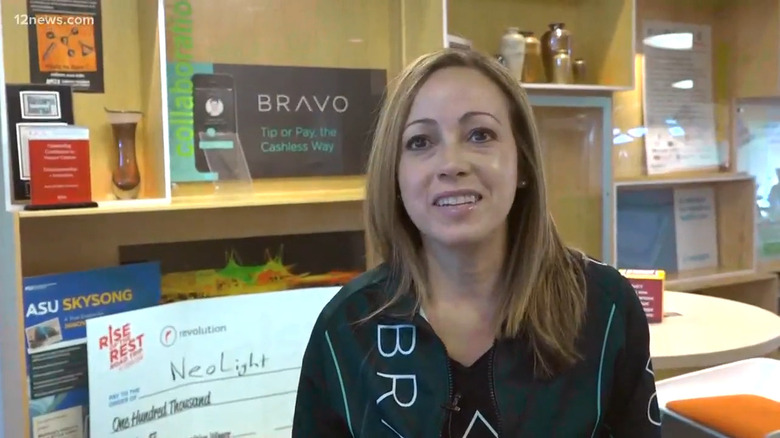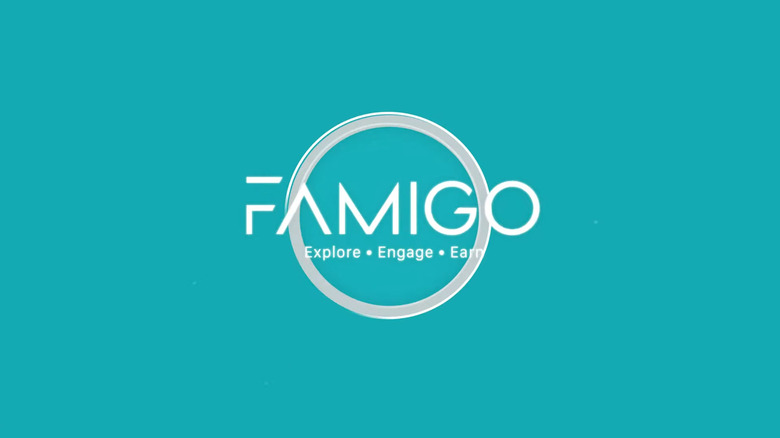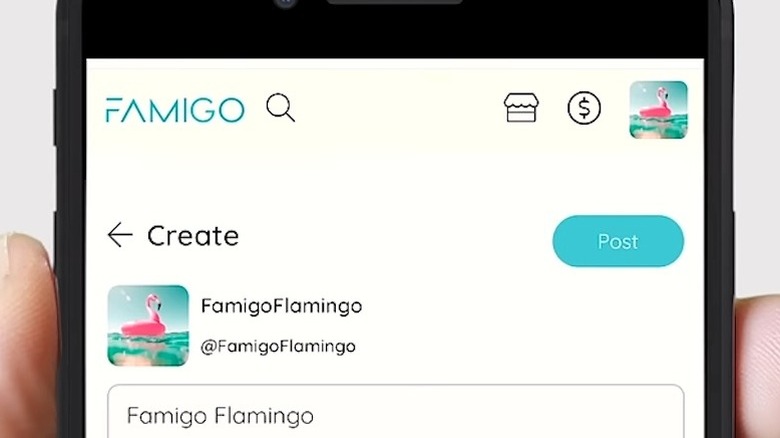What Happened To The Bravo Tipping App From Shark Tank Season 9?
The ninth episode of the ninth season of "Shark Tank" premiered on ABC on November 5, 2017, to an audience of 3.32 million people according to Nielsen Media Research's viewership ratings. The second of four pitches featured that week was for Bravo, an app for making it easier to tip service industry workers. Though some of the Sharks were skeptical that Bravo could offer anything that Venmo and its competitors couldn't, founder Maria Luna seemed to change some minds by explaining that her proximity-based app didn't require the exchange of personal information (like phone numbers) the way that Venmo and others do. With that separating it from the competition, the segment closed with Bravo securing a two-Shark deal at a pretty fair valuation, albeit for less than its initial, overly ambitious asking price.
However, it doesn't look like the deal officially closed after the episode was shot. Bravo stuck around for a few more years, eventually pivoting to a related but different style of payment ecosystem. Renamed Famigo, it's a Patreon-style platform for content creators, focused on its web app (as opposed to native mobile apps) while targeting Hispanic consumers and creators. Famigo has grown beyond where Bravo stood, with a bigger user base and more investments, but it's unclear just how big it's gotten or could get. Let's take a more detailed look at Bravo's journey through "Shark Tank" into rebranding as Famigo.
What happened to Bravo on Shark Tank?
Hector Rodriguez — who barely spoke — and Maria Luna entered the proverbial tank seeking $150,000 for a five percent equity stake in Bravo, their mobile payments app company that they hoped would become the go-to way to tip service industry workers. In an increasingly cashless world, the idea is that Bravo helps find the person you want to tip by detecting users in close proximity, making for a friction-free way to send them electronic payments. Luna claimed that, as of the shooting of the episode, Bravo had "claimed 25 percent of the service industry in Arizona." At that time, Bravo had processed nearly $1 million in tips based on its test marketing in Arizona, with revenue coming from a two percent convenience fee that's tacked onto what the tipper is paying so that the worker is paid the full tip as well as plans to sell user data and targeted advertising.
Mark Cuban asked why this was any better than Venmo or similar products, to which Luna explained that those apps are not sufficiently secure for dealing with strangers, while Bravo is built for that. Barbara Corcoran opted out first, feeling Bravo needed too much money to hit mass adoption, while guest Shark Alex Rodriguez followed, confused by the pitch. Cuban and Lori Greiner offered $150,000 combined for 15 percent, to which Luna countered with 10 percent plus two percent advisory shares. Upping the advisory shares to four percent sealed the deal.
What happened to Bravo after Shark Tank?
What we see on "Shark Tank" is an informal negotiation and agreement that's just a prelude to a much more formal process, and it seems Bravo's deal with Mark and Lori never closed after this process. Both Mark and Lori maintain web pages listing their "Shark Tank" investments, and neither mentions Bravo. For later seasons, this isn't always foolproof as, for example, Mark's investment in Grouphug never appeared on his site, but for older episodes, it tends to be a pretty good litmus.
In the immediate aftermath of the episode airing, Bravo was featured in an article published by Arizona State University's ASU News. In that article, Luna acts as if the deal closed. "It's their job, they're Sharks, and it's their right to negotiate," she said. "It was a very positive experience and will give us access to resources we didn't have before." Meanwhile, Bravo was part of ASU's Venture Devils program, an accelerator based out of the university's office of Entrepreneurship + Innovation in Scottsdale. "We have the shared space where we can have team meetings, and just being around other companies that are in our same stage as us is so inspiring," Luna added. "You learn a lot from other companies that are going through the same pains. Just that environment alone is super helpful." Around the same time, Luna was also interviewed by KPNX-TV, the Phoenix market's NBC affiliate.
Is Bravo still in business?
Bravo, the platform for tipping service industry workers, appears to be long-dead. The app is no longer available in the Apple App Store or the Google Play Store, though it's not clear how long that's been the case. However, the company still exists and pivoted Bravo into a related yet also very different area: Famigo, a platform for paying content creators. Based on when Bravo/Famigo issued a press release about the change, it happened around September 2021.
"FAMIGO's mission is to enable content creators to leverage their content to build communities, create deeper connections with fans, share their gifts with the world, and bring people together," explained Maria Luna in the press release. "Our new web app is the most advanced subscription-based content creation platform for musicians, entertainers, podcasters, sports personalities, fitness instructors, beauty influencers and other creators." That web app has since been supplemented by an iOS app, though the only Android app named "Famigo" in the Play Store is an unrelated, out of date financial planning app.
Several weeks after the rebrand, Al Dia published an article about Luna and Famigo. There, Luna said that so far, Famigo had 3,000 content creators and 300,000 fans signed up, although the article didn't say how many fans were paying for subscriptions or had paid for à la carte content. As of a March 2023 press release, Famigo had more than 1.7 million users and had recently completed a successful seed round.
What's next for Famigo and its founders?
Exactly what's next for Famigo is hard to pin down. Its level of social media activity varies by the platform, from semi-active (Instagram, with posts roughly once a month) to less active (Facebook, where there have been no posts in six months as of this writing after a previously active posting schedule) to arguably dormant (X, the platform formerly known as Twitter, with no timeline/non-reply posts in the two years before the writing of this article). Neither the social pages nor Famigo's website make any real effort to sell the platform as being superior to more established alternatives like Patreon, so it seems like the company's play is to appeal more to Hispanic and Spanish-speaking consumers and content creators. As for user numbers and investment news, it doesn't seem like there's been any updates since the aforementioned 2023 press release past Maria Luna telling TheSuccessfulFounder.com in June of that year that Famigo was seeing 20 percent growth month over month.
Meanwhile, Luna maintains presences on LinkedIn, Instagram, and Facebook, all of which still list her as CEO of Famigo. It looks like she's most active on the two Meta-owned social media platforms, but mainly posting non-Famigo content outside of co-authoring posts with the Famigo account on Instagram. All told, it seems like she's all-in on Famigo as her professional focus long-term, it's just not clear how much the platform has penetrated the marketplace or if it's shown measurable growth since 2023.




